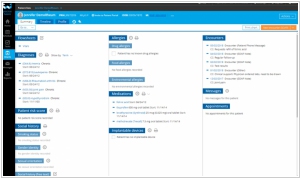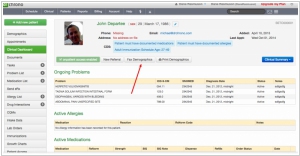DrChrono vs Practice Fusion
January 16, 2024 | Author: Sandeep Sharma
8

Cloud-based electronic health record platform for doctors and patients. With no software to download or hardware to manage, your cloud-based EHR is always up to date - helping you stay current in a continuously changing clinical landscape. Consolidate provider and staff responsibilities with a comprehensive system that organizes patient information before, during and after the visit.
DrChrono and Practice Fusion are two widely used electronic health record (EHR) systems in the healthcare industry, and they differ in several key aspects:
1. Company and customer base: DrChrono caters to a broad range of healthcare providers, including small to large practices, multi-specialty groups, and ambulatory care facilities. Practice Fusion, on the other hand, was acquired by Allscripts in 2018 and primarily serves smaller practices and independent physicians.
2. Features and functionality: Both systems offer core EHR functionalities, such as patient management, clinical documentation, e-prescribing, scheduling, and billing. DrChrono distinguishes itself with its mobile-focused approach, providing robust mobile applications for providers to access and update patient records on smartphones and tablets. Practice Fusion focuses on ease of use and simplicity, offering a straightforward user interface and streamlined workflows.
3. Customization: DrChrono offers a higher degree of customization, allowing providers to tailor the system to their specific practice needs. Practice Fusion, on the other hand, has more limited customization options, as it follows a standardized template-based approach.
4. Interoperability: Both DrChrono and Practice Fusion prioritize interoperability, enabling data exchange and connectivity with other healthcare systems. They support industry standards like HL7 and CCD, facilitating integration with external systems and health information exchanges (HIEs).
5. Cost: DrChrono typically offers a subscription-based pricing model, which can vary based on the number of providers and additional features needed. Practice Fusion used to offer a free version of its EHR system, but after the Allscripts acquisition, it transitioned to a paid subscription model with varying pricing tiers based on practice size and needs.
See also: Top 10 Medical Practice software
1. Company and customer base: DrChrono caters to a broad range of healthcare providers, including small to large practices, multi-specialty groups, and ambulatory care facilities. Practice Fusion, on the other hand, was acquired by Allscripts in 2018 and primarily serves smaller practices and independent physicians.
2. Features and functionality: Both systems offer core EHR functionalities, such as patient management, clinical documentation, e-prescribing, scheduling, and billing. DrChrono distinguishes itself with its mobile-focused approach, providing robust mobile applications for providers to access and update patient records on smartphones and tablets. Practice Fusion focuses on ease of use and simplicity, offering a straightforward user interface and streamlined workflows.
3. Customization: DrChrono offers a higher degree of customization, allowing providers to tailor the system to their specific practice needs. Practice Fusion, on the other hand, has more limited customization options, as it follows a standardized template-based approach.
4. Interoperability: Both DrChrono and Practice Fusion prioritize interoperability, enabling data exchange and connectivity with other healthcare systems. They support industry standards like HL7 and CCD, facilitating integration with external systems and health information exchanges (HIEs).
5. Cost: DrChrono typically offers a subscription-based pricing model, which can vary based on the number of providers and additional features needed. Practice Fusion used to offer a free version of its EHR system, but after the Allscripts acquisition, it transitioned to a paid subscription model with varying pricing tiers based on practice size and needs.
See also: Top 10 Medical Practice software



